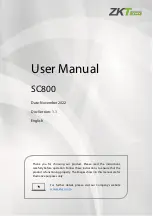
5. SYSTEM OPERATION
Page 39
© 2007 DH Instruments, a Fluke Company
Raise the internal calibration mass and wait for stability.
Average the load cell output again to make sure that the original calibration tare is valid
and the system has not drifted.
If the difference between calibration tares obtained before and after the mass load is
lowered exceeds the
[Internal Limits]
limit specified by the
<Maximum deviation
between calibration mass indications>
option (see Section 6.6.4.5), a warning
message will display prior to activating calibration information.
If Run Test Sequence is active and the test is fully automated, a failure of this criterion
forces FPG Tools to automatically log the results of the calibration, but not activate any
new calibration data.
The above steps are repeated for the specified number of times to lower the internal
calibration mass. This value is set using the
[Internal Limits]
<Number of times to
lower the calibration mass….>
option (see Section 6.6.4.5).
The individual calibration mass values obtained in the previous steps are averaged
together to get a final calibration mass value.
5.3.2
ACTIVATING NEW CALIBRATION
The averaged calibration mass is used to determine a new calibration factor according to the
equations detailed in Section 11.3.5.4. The results display on the
<Internal Calibration
Results>
form. Use the information on this window to determine whether or not to activate,
log or ignore the results of the internal calibration.
Always log the results of the internal calibration unless an obvious error occurred during
the calibration process. The information logged in the "intcal.log" file (see
Section 9.3)
can be very useful for troubleshooting.
When all calculations are complete, the
<Internal Calibration Results>
window displays.
If any limits were exceeded or errors occurred during the calibration process, an error
message will display at this time indicating the failure. This window contains all relevant
calibration information required to determine whether or not to keep the new calibration.
Select the desired option to complete the internal calibration process.
Figure 14.
Internal Calibration Results Window
















































